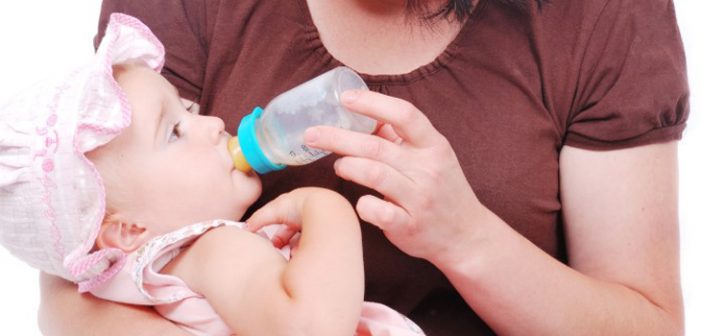Everybody knows and understands – there is no alternative to breastfeeding your baby, however being forced due to factors like no milk in mother’s breast or others, you may choose formula feeding. By necessity, the most important issue is to keep your baby well-fed. So, formula can become the necessary supplement but with some strong caution and concerns. In addition to choosing the best baby formula, there are things you must know about formula feeding and here are seven of them.
-
Talk to the Doctor
Most of the infants are fine with the milk-based standard formulations. However, due to issues of sensitivity to the milk-based formula, doctor may recommend protein hydrosolate or soy-based versions. Powdered formula is less expensive but not sterile. So, for children with weak immunity or similar issues may be fed with ready-to-use formula that are sterile at preparation. Also, you may discuss the brand or generic with the doctor too. Children may respond better to a particular brand than the others, you have to find that out and try best to benefit your child most.
-
Try to be a Freak for Cleanliness
You have to give up all of your germaphobic attitudes and tendencies. Always make sure, you thoroughly clean the basin or counter where you will be making the formula feed or feed the baby. The bottles, nipples, container in which you keep the formula and every other ingredient involved in the whole process of feeding must be well cleaned after every use. Before you use them for the first time, must sterilize them properly. After each use wash them with hot water and detergent/soap, keep the parts assembled as much as you can to prevent their contact with dirt and debris.
-
Properly Mix the Perfect Recipe
Mixing the ingredients is a critical issue in making the formula to serve your baby properly. The non-sterile powdered formula may contain hazardous bacteria that can cause severe illness in the infants. So, the water you use to prepare the formula, must be boiled above 70°C temperature in order to make it safe from the live harmful bacteria. Also, don’t use the line water directly because it may contain extra lead or iron. Make sure you follow the instructions for preparations and amounts exactly.
-
How to store Prepared Formula?
According to World Health Organization, the best way is to prepare new formula each time you feed your child. However, in practice this is quite impossible for many parents because of so many external factors are involved. So, safety and ease of efficacy should be balanced well. Once, you prepare the formula it should not be left in room temperature for more than an hour. Keep it at a steady cool temperature and do not store it in the refrigerator for more than a day. Avoid using the remnant from one feeding and use marker or tags to know the exact time you prepared it to ensure the reservation time is not over.
-
How and When to Heat Bottles?
Primarily the bottle doesn’t need to be hot/heated for your baby. Room temperature is enough or even cool formula may provide same effect in terms of nutritional values. If you avoid warm formula from the beginning, the baby may well accept it, and this would take one step away from your manual. If you prefer warming, do not use microwaves because the uneven heating may cause spots on the bottle. Heat up some water, soak and rinse the bottle well, and wait until it comes to right temperature for your baby.
-
Feed Enough but Not Over
This is common concern for all mothers – whether your baby is getting enough, or you are giving too much – this is an issue which works in a case by case basis. You have to learn the cues the baby produces when he/she is full or empty. Know that crying is a late sign of hunger and often it may mean other things than asking for the bottle. You should avoid force feeding and practice feeding the baby on demand.
-
Combining Breastfeeding and Formula
Don’t ever hang on to your formula as the sole meal for the baby, as well as it doesn’t mean you will have full breasts after feeding the baby with formula for couple of weeks. The better way is to use combination of the two in accordance to the necessity. Allow the baby to suck your nipples even you depend on formula. You may discuss the proper combination with your doctor.
Conclusion
Remember, you should try and feed your baby breast milk for the first 6 months if possible. Breastfeeding can continue till end of the first 12 months. If you are not having enough breast milk, formula feeding can be an option. Otherwise, formula feeding should start from start of the second year. By this time, your baby should have teeth. It’s highly recommended you small baby toothbrush to brush the teeth of your baby.




